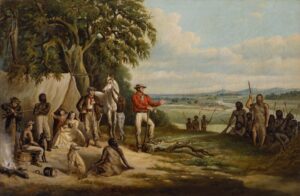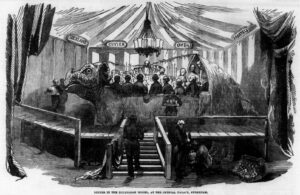A planisphere is an age-old device for reading the night sky and its celestial inhabitants. It allows you to locate and track stars and planets accurately. But how did ancient people master this astronomical invention so accurately?

Philips Planisphere. Photo: H Raab
The word planisphere comes from the Latin-derived word “planisphaerium”, which means flat sphere. This refers to the flat representation of the Earth on paper. Printed star charts began in the 1500s, but the first planisphere was a 1624 chart from German astronomer Jacob Bartsch.
Today, planispheres are two partially overlapping metal or plastic disks. The outermost disk contains dates and times, while the innermost disk shows constellations, galaxies, and deep-sky objects.
The two disks rotate on a common axis, usually the north celestial pole. The planisphere shows both the Earth’s horizon and a star chart. With them, you can calculate the visibility of an object at any given time. The latest stargazing technology has made planispheres something of a curiosity, but they were a crucial first step to understanding our stellar neighborhood.
The Köfels Impact Event
One of the earliest planispheres is a 5,000-year-old Sumerian disk. Its clay surface contains cuneiform inscriptions and an eight-picture sequence — impressive for an object only 14cm in diameter.
Archaeologists found it where the Royal Palace of Nineveh used to stand, in modern-day northern Iraq. Experts translated it and found that it recorded an asteroid impact that took place precisely on June 29, 3123 BC.
The tablet documents the before, during, and aftermath. Many believe that the asteroid impact corresponds with the Sodom and Gomorrah story from the Old Testament. Researchers call this asteroid strike the Köfels Impact Event.

Cuneiform tablet in the British Museum. Photo: British Museum
Later, in the Medieval and Renaissance periods, planispheres evolved to incorporate more earthly happenings. While they kept their astronomical perspectives, planispheres also began to take on the form of world maps. With them, mapmakers created all-encompassing representations of our place in the universe. Sometimes, they even added current economic, political, and religious worldviews. For example, Jerusalem was depicted as the centre of the world and monstrous creatures lurked beyond civilized lands.
Historians believe that the lack of light and other pollution gave the night sky an ideal clarity that partly made up for our ancestors’ lack of instruments. Generations of astronomers had the time to gauge how celestial objects behaved over the decades and even centuries. However, until we discover more about our predecessors and unearth more of their ingenious works, we can only guess how much they knew and how they knew it.





